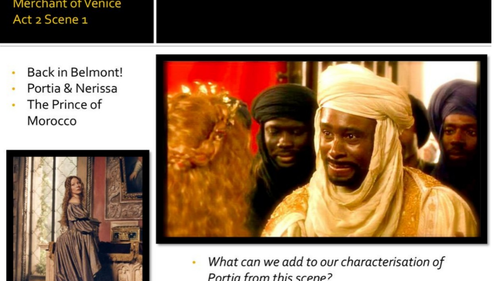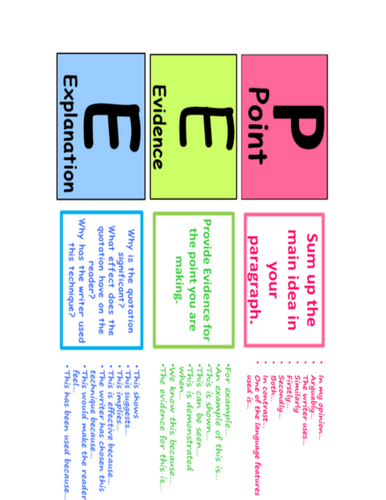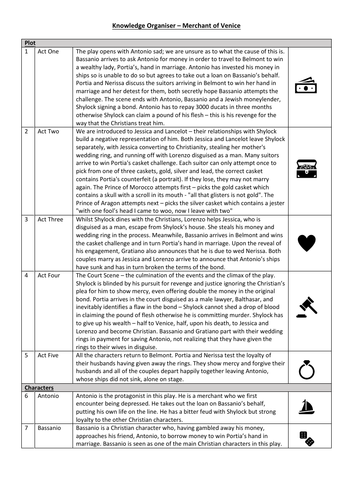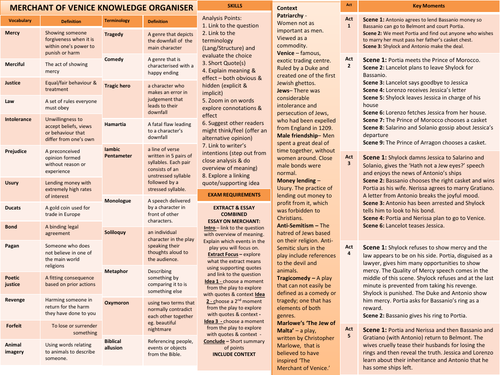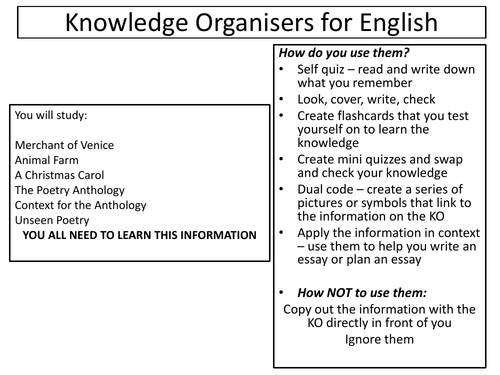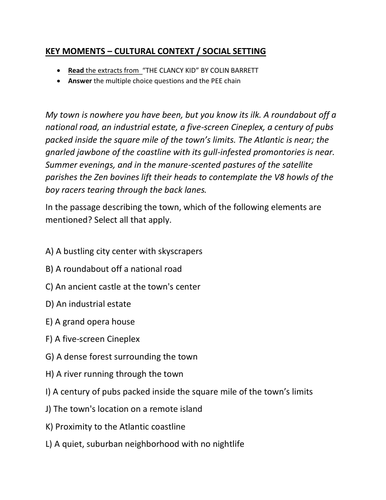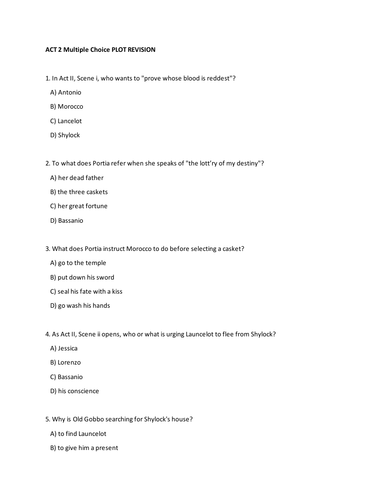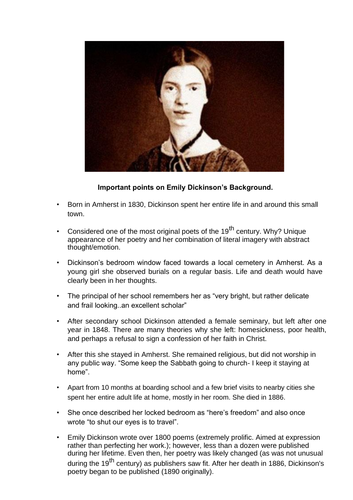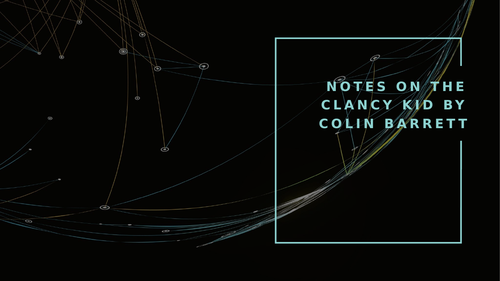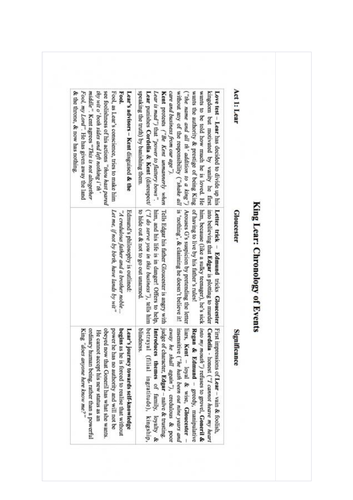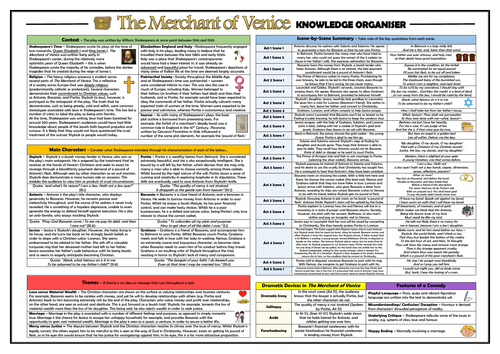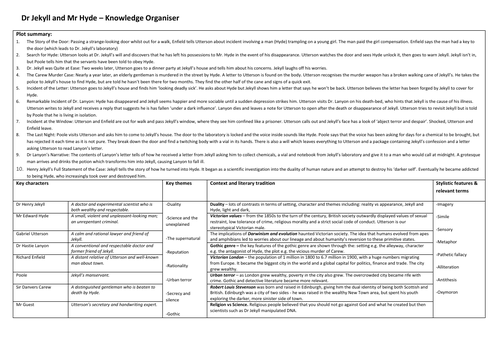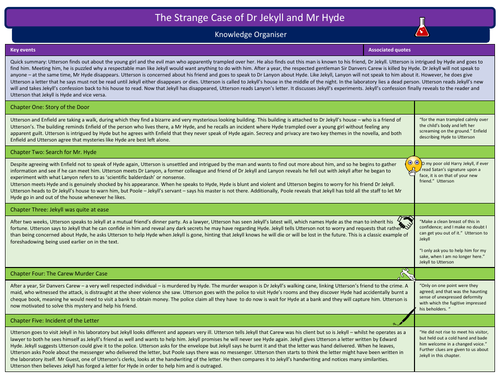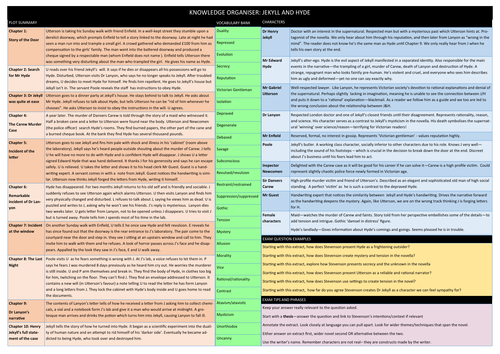
426Uploads
101k+Views
7k+Downloads
English language arts

SENTENCE FRAMES (OPEN DYSLEXIC FONT)
SENTENCE FRAMES (OPEN DYSLEXIC FONT)
PEE CHAIN AND SENTENCE FRAMES IN COLOUR

AQA Knowlege Organiser English
Merchant of Venice
Animal Farm
A Christmas Carol
The Poetry Anthology
Context for the Anthology
Unseen Poetry

Young Skins - Colin Barrett- The Clancy Kid Worksheet -Social Setting
Young Skins - The Clancy Kid Worksheet
multiple choice on key moments
Paragraph answers on key moments

Merchant of Venice Act 2 Multiple Choice Worksheet and Shylock PEE chain
Merchant of Venice Act 2 Multiple Choice Worksheet and Shylock PEE chain

Emily Dickenson Notes
Biography
Themes
COntent
Style
Dickinson’s Poems
“Hope” is the thing with feathers
There’s a certain Slant of light
I felt a Funeral, in my Brain
A Bird came down the Walk
I Heard a fly buzz – when I died
The Soul has Bandaged moments
I could bring You Jewels – had I a mind to
A narrow Fellow in the Grass
I taste a liquor never brewed
After great pain, a formal feeling comes

"The Clancy Kid" by Colin Barrett POWERPOINT
notes on “The Clancy Kid” by Colin Barrett: POWERPOINT
Setting and Atmosphere
Characters
Themes
Narrative Style
Cultural Context
Social Setting

Sharp notes - King Lear
The notes collectively provide a comprehensive overview of key events, character dynamics, and thematic elements in Acts 1 through 5 of Shakespeare’s “King Lear.” The structured summaries cover Lear’s initial decision to abdicate, the dynamics between Lear and his daughters, the unfolding deceit by characters like Edmund, and the consequences that lead to madness, suffering, and ultimately, tragedy.
In Act 1, Lear’s decision to divide his kingdom and the subsequent flattery competition among his daughters showcase themes of authority, vanity, and the potential for deception. Act 2 introduces Edmund’s plot against his legitimate brother Edgar, setting the stage for betrayal and manipulation.
Act 3 delves into Lear’s descent into madness, the mistreatment he faces from his daughters, and the parallel storyline of Gloucester’s suffering. Act 4 portrays the consequences of the characters’ actions, including Gloucester’s attempted suicide and the reunion of Lear and Cordelia.
Act 5 reaches the tragic climax, featuring Lear’s heartbreaking realization of his mistakes, the death of key characters, and the play’s somber resolution. The notes capture the essence of each act, providing a condensed yet informative guide to the intricate narrative, character arcs, and the play’s central themes.

Writing Map
Serves as a comprehensive guide for analyzing and writing about literature
Addresses questions related to characters, themes, and text exploration
Encompasses various elements:
Inference Phrases
Discourse Markers
Point Sentence Starters
Detailed breakdown of Language and Structural Techniques
Encourages identification and analysis of powerful words and phrases
Explores their effects, associated techniques, and impact on readers and author’s intentions
Provides a comprehensive list of language and structural techniques:
Adverbs
Imagery
Repetition
Parallel structure
And more
Facilitates a thorough examination of literary elements
Functions as a helpful tool for students or writers
Aids in organizing thoughts and responses when engaging with and writing about literature.

Narrative Writing Worksheet: Understanding Characters and Relationships Sally Rooney Normal People
Narrative Writing Worksheet: Understanding Characters and Relationships Sally Rooney Normal People

King Lear Act 1 Test
he King Lear Act 1 Test is a comprehensive assessment designed for 6th Year Leaving Certificate English students. The test evaluates students’ understanding of the main events, themes, characters, and literary techniques in Act 1 of King Lear.
Test Breakdown:
Part 1: Multiple Choice Questions (10 marks)
This section consists of 10 multiple-choice questions. Each question focuses on key moments, character actions, or significant quotes from Act 1. Students are required to select the correct answer from four choices.
Topics covered include:
Lear’s decision to divide his kingdom.
The roles of characters like Cordelia, Kent, and the Fool.
Key quotes and Lear’s emotional state by the end of Act 1.
Part 2: Fill-in-the-Gaps (11 marks)
This section requires students to complete missing words from important quotes in Act 1. A word bank is provided to assist students in filling in the blanks.
Example quotes include:
Lear: “How sharper than a __________’s tooth it is to have a __________ child!”
Fool: “Thou hadst little __________ in thy bald crown when thou gavest thy __________ one away.”
Part 3: Who Said It? (5 marks)
In this section, students match famous quotes from Act 1 to the correct character. Each quote is listed with four possible speakers, and students must identify who said it.
Key quotes include lines from Lear, Cordelia, Kent, and the Fool.
Part 4: Short Answer Questions (10 marks)
This section includes 10 short answer questions, requiring students to respond in 1–2 sentences. The questions focus on character actions, motivations, and significant plot points.
Example questions include:
How does Edmund manipulate his father Gloucester in Act 1?
What advice does the Fool give to Lear in Scene 4?
Part 5: Character Analysis (20 marks)
This section is the most detailed part of the test, asking students to choose one of three essay-style questions to answer. The focus is on analyzing key characters (Lear, the Fool, Goneril, and Regan) and how they are developed in Act 1. Students are expected to refer to key quotes and techniques used by Shakespeare.
Example essay questions include:
Analyze King Lear’s actions in Act 1. How do his decisions to divide the kingdom and test his daughters reflect his personality flaws?
Discuss the role of the Fool in Act 1. How does he use humor and criticism to help Lear understand his mistakes?

King Lear Worksheet
Unlock your students’ understanding of Shakespeare’s King Lear with this detailed and structured worksheet focused on Act 1 Scene 1. This resource is perfect for helping students engage deeply with the text, encouraging close reading and textual analysis.
Key Features:
Guided Questions with Embedded Quotes:
Students are prompted to answer key questions about the scene, with a selection of quotes provided to support their responses. This helps them practice using evidence from the text to back up their analysis, following the PEE (Point, Evidence, Explanation) structure.
Character Analysis:
Explore the motivations and emotions of key characters like Gloucester and King Lear. Students are encouraged to analyze Gloucester’s complex feelings toward his son Edmund and Lear’s reasons for dividing his kingdom.
Matching Exercise - Daughters’ Responses:
A creative and interactive task where students match each of Lear’s daughters (Goneril, Regan, and Cordelia) to the correct adjective that describes their nature, and then connect this to a corresponding quote from the text. This exercise aids in developing critical thinking and comprehension skills.

